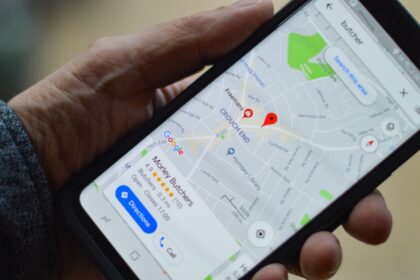The ultimate guide to creating high-converting landing pages
Do you need to create a landing page that will capture the attention of your visitors and increase conversions? Read on for the ultimate guide.
This ultimate guide will cover everything you need to know about creating high-converting landing pages. We’ll look at what makes a good landing page, how to optimize for maximum conversions and some best practices for writing headlines.
By the end of this guide, you’ll be ready to start building successful landing pages that will drive leads and sales for your business.
But first, let’s start with the importance of landing a landing page.
Why is it important to have a landing page?
Having a well-crafted landing page can be the difference between a successful online business and one that struggles. Landing pages are the first point of contact for visitors and customers, so it’s important to get it right.
A good landing page is essential for any online business as it serves as a platform to showcase a product or service and entice visitors to take action. It should be designed with a purpose in mind and should have an obvious call to action.
An effective landing page lets you track important data such as conversion rate, time spent on a page, click-through rate, and more. This data can help you understand how people interact with your page and make necessary adjustments to increase conversions.
The most important thing to remember is that a landing page is the “make or break” moment when it comes to convincing your visitors to take action. A good landing page can ensure more leads and sales, while a poorly designed page will result in more bounces. If you want to maximize conversions, you need to create an effective landing page.
An example of a good and effective landing page is the Indeed advanced search page. It provides all the tools and information that a person looking for a job needs. So, that person is likely to stay longer on the page.
How to create the perfect landing page
Creating an effective landing page can be daunting, especially if you’re pressed for time. But with the right tools and strategy, you can create a high-converting page that will help you bring in more customers in no time.
We’ll walk you through the steps to create the perfect landing page below:
1) Pick a catchy headline
Having a catchy headline is essential when creating the perfect landing page. Your headline should be eye-catching, draw attention and accurately describe what you have to offer.
Think about the message that you are trying to get across. Are you offering an exclusive deal? Are you launching a new product? Is there a deadline for taking advantage of this offer? Make sure the headline you choose clearly communicates your message in as few words as possible.
It’s also important to ensure that your headline stands out from the rest of the content on the page. You want it to be easily visible and readable. Use different font sizes, colors and styles to help emphasize the importance of your headline.
Most importantly, keep it simple. Avoid using complex language or phrases that may confuse your audience. Stick with a few straightforward words that will quickly and effectively communicate your message and capture your reader’s attention.
2) Use high-quality images
Images are a great way to draw attention to your landing page, so it’s important to use professional and high-quality ones.
Think about the type of images you want to use on your page. Are they visuals from your products or services? Are they images of people using your products or services? Or are they illustrations? Whatever the image, make sure it’s high-quality to stand out.
You can use stock photography or create your own images. When creating your own images, be sure to use the right lighting, background, and styling. It’s also essential to think about size and resolution. Ensure the images you use are optimized for the web, so they don’t slow down your page’s load time.
Don’t forget to include an Alt text for every image you use on your landing page. This will help improve SEO and provide better accessibility for those who may be using screen readers.
3) Write compelling copy
Copywriting is a critical component of any successful landing page. You need to have persuasive and engaging content that will compel users to take action. To write great copy, consider the following:
- Keep it simple and focused: Getting your message across quickly and clearly is important. Focus on the most important points and use clear and concise language.
- Speak directly to your reader: Use a conversational tone when writing your copy to help create an engaging experience for the reader. This can be done by using “you” and “your” instead of “we” and “our”.
- Know your audience: Your copy should be tailored to the specific needs of your audience. Take the time to research who you’re targeting and what they are looking for.
- Highlight the benefits: Make sure to clearly outline the benefits users will get from taking action on your landing page. Focus on what they will gain, not just what they will lose.
- Use strong action verbs: Encourage readers to take action by using powerful verbs like “discover”, “explore”, and “unlock”.
- Show your personality: Adding a little personality to your copy can help make it stand out and capture the reader’s attention. Be creative and have fun with it!
- Experiment with different types of visuals: Visuals can help draw people into the page and break up long blocks of text. Having too much text can be overwhelming and distracting, so break it up with visuals whenever possible.
- Always double-check spelling and grammar before publishing your page: Typos can be easily overlooked but may hurt your credibility. Finally, test and refine your landing page often.
Writing effective copy for your landing page takes practice, but with a little effort, you can craft compelling content that will convert visitors into customers. Just pay attention to how users interact with it and look for opportunities to improve their experience. With a few tweaks here and there, you can build a high-converting landing page in no time.
4) Use an eye-catching call-to-action (CTA)
The call-to-action (CTA) is the single most important element on your landing page. It’s the final opportunity to convince visitors to convert, so it’s essential to have an eye-catching CTA.
To do this, make sure you use strong language that directly states the value and benefit of taking the desired action. The language should be specific, actionable, and above all, convincing.
When creating your CTA, make sure it stands out from the rest of the page. Try using a different font size, color, or style than the rest of the page. Additionally, include buttons or other visuals to draw attention to the CTA. A great way to ensure your CTA is easily visible and stands out from the page is to include a background color or graphic behind the text.
You can also ensure your CTA accurately reflects what will happen when visitors take the desired action. For example, if visitors sign up for a newsletter, make sure the CTA states something like “Sign Up for Our Newsletter” and not something vague like “Click Here”. Your goal should always be to make it as easy and clear as possible for visitors to take the desired action.
5) Keep it short and sweet
When creating the perfect landing page, you want to make sure that it is succinct and easy to digest. This means keeping your content short and sweet. Your landing page should not be a wall of text but rather broken up into easily consumable sections.
To do this, there are certain things you have to consider. First, keep your call-to-action (CTA) at the forefront of your landing page. Make sure it is visible and stands out among the other elements on the page.
Moreover, when creating your CTA, it has to be specific and detailed. Avoid using generic terms such as “Click Here” or “Submit Now”, as these won’t give visitors a clear indication of the desired outcome or desired action. Consider using more personalized and detailed CTAs such as “Download Now” or “Order Now”. This will help create a sense of urgency for potential customers and compel them to click through your page.
Also, keep your language clear and concise, and focus on providing value to your visitors. A short and sweet landing page will help ensure that visitors are able to understand what you are offering and take action quickly.
6) Optimize for mobile
As more and more users are accessing the internet via mobile devices, optimizing for mobile should be a top priority when creating a landing page.
Start by ensuring that your content is viewable on all devices. Use responsive design to ensure your content looks good regardless of the device it’s being viewed on. Test your design on multiple devices and browsers.
Furthermore, consider the size of your images when optimizing for mobile. Mobile internet connections tend to be slower than desktop connections, and larger images can significantly slow your page’s loading time. Consider compressing your images before uploading them or using a third-party tool to help with this process.
Finally, keep your forms short and sweet. Reduce the number of form fields as much as possible and make sure your form is easy to fill on mobile devices. Use placeholder text to help guide users and ensure the CTA is clear and visible on mobile and desktop devices. Consider usng online form templates to expedite the design process while maintaining user-friendly functionality across different devices.
7) Use social proof
When designing a landing page, using social proof is an essential element to consider. Social proof is the phenomenon where people imitate the actions of others in order to feel more secure in their decisions. It’s one of the most powerful tools to help guide visitors through the buying process and turn them into customers.
The most effective way to leverage social proof is to include testimonials from existing customers on your landing page. Testimonials are personal stories from previous customers that provide other potential customers with a better understanding of what they can expect when they purchase your product or service.
Including customer reviews can also help build trust and show that your business is legitimate. Reviews provide insight into how well your product or service works and can be a great source of social proof.
It’s also important to include social media share buttons on your landing page. This encourages visitors to spread the word about your business, giving you more exposure and helping build a larger customer base.
Social proof is one of the best ways to create a powerful and effective landing page that drives conversions. Testimonials, customer reviews, and social media share buttons can all help to improve user experience, increase trust, and ultimately convert more visitors into customers.
8) Include a lead capture form
A lead capture form is one of the most important components of any successful landing page. It’s a form that visitors fill out to provide their contact information in exchange for something like a newsletter subscription or a free eBook. By including a lead capture form, you can convert your visitors into leads and, eventually customers.
When designing your lead capture form, keep it simple and straightforward. Too many fields will cause visitors to abandon the form. Instead, focus on collecting only the essential information needed to qualify a lead, such as a name, email address and phone number. Have an obvious call-to-action (CTA) button that stands out from the rest of the page and is clearly labeled, like “Subscribe” or “Download Now”.
In addition, include a privacy policy to assure visitors that their data will be kept secure. This will encourage them to feel comfortable sharing their contact information.
The lead capture form is prominently displayed on your landing page. Place it above the fold, so visitors don’t have to scroll down to find it. The easier it is to find and fill out, the more likely visitors will do it.
9) Work out what you want your landing page to achieve
When you create a landing page, you must decide on your goal for the page. This will help you create an effective page that meets your needs. The primary goal of any landing page should be to get visitors to take the desired action.
When figuring out what you want your landing page to achieve, consider the following:
- What type of action do you want visitors to take? Is it signing up for a free trial or downloading a white paper?
- Do you want them to fill out a contact form or watch a video?
- What kind of information do you need to collect from your visitors?
By clearly understanding your goals and objectives, you can ensure that your landing page is tailored to meet those needs. You’ll be able to create a landing page that effectively captures leads and encourages conversions.
10) A/B test your landing page
A/B testing is an invaluable tool for improving your landing page. A/B testing allows you to compare two versions of the same page, making changes and observing how they affect the user experience. This process enables you to optimize your page, ensuring that it performs as well as possible.
When running an A/B test, defining a clear goal is important. You should decide what metric to optimize, such as click-through rate, conversions, or time spent on the page. Once you’ve determined this goal, you can start to make changes to your landing page and track the results.
Changes you can test include anything from the design elements of your page, such as colors and fonts, to the placement of CTAs and content blocks. It’s important to test only one element at a time to measure the change’s effects accurately.
You should also know the sample size needed for an A/B test. The larger the sample size, the more reliable your results will be. You should run your tests for at least a week to ensure you receive enough data to draw accurate conclusions.
Testing and optimizing your landing page with A/B testing can increase your chances of achieving your desired results. A/B testing is a great way to learn more about your audience and create a page that resonates with them.
11) Analyze your results
Analyzing the results of your landing page is key to understanding whether it’s effective or not. After all, what good is a landing page if it doesn’t do its job?
To analyze your results, you should track your key performance indicators (KPIs). These KPIs will help you understand how many people visit your page, how long they stay, and if they convert.
The first step to analyzing your results is to track your page views. This metric tells you how many people are coming to your page. You can use tools like Google Analytics or you can shorten your landing page URLs into branded tracking links to keep track of this data. Tracking this data over time is important to see if your page views increase or decrease.
The second metric to track is the bounce rate. The bounce rate is the percentage of people who leave your page without taking any action. A low bounce rate indicates that people engage with your page and find it useful. If your bounce rate is high, you may need to rethink the content of your page or add a new CTA to draw more people in.
Lastly, track the number of conversions that you’re getting from your landing page. Conversions are defined as a user taking an action that you want them to take. This could include signing up for your newsletter, downloading a lead magnet, or purchasing. If you’re not getting enough conversions, consider adding new incentives or changing how you present your CTA.
By analyzing these metrics, you can better understand how well your landing page is performing and make adjustments accordingly.
Use these principles to create a powerful landing page
Creating the perfect landing page for your business can be daunting, but it doesn’t have to be. We have shown you how to create a stunning, effective landing page using simple principles. We have covered everything from choosing the right headlines to writing copy capturing your visitors’ attention.
With our step-by-step guide, you’ll be able to get your new landing page up and running in no time! What’s left for you to do is add your landing page-making skill to your skillset when creating an online CV.
Want to learn more about landing pages? Read our guide to creating a sales page that actually sells here.










